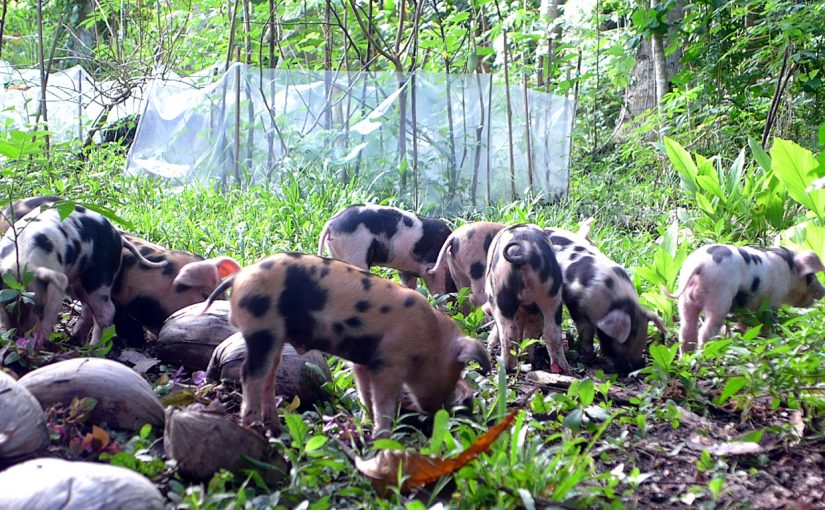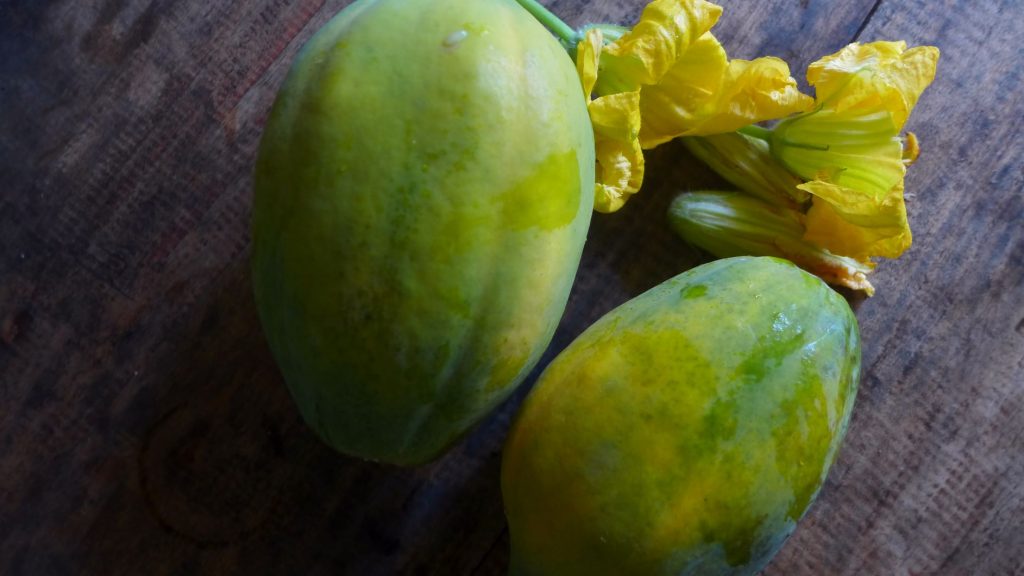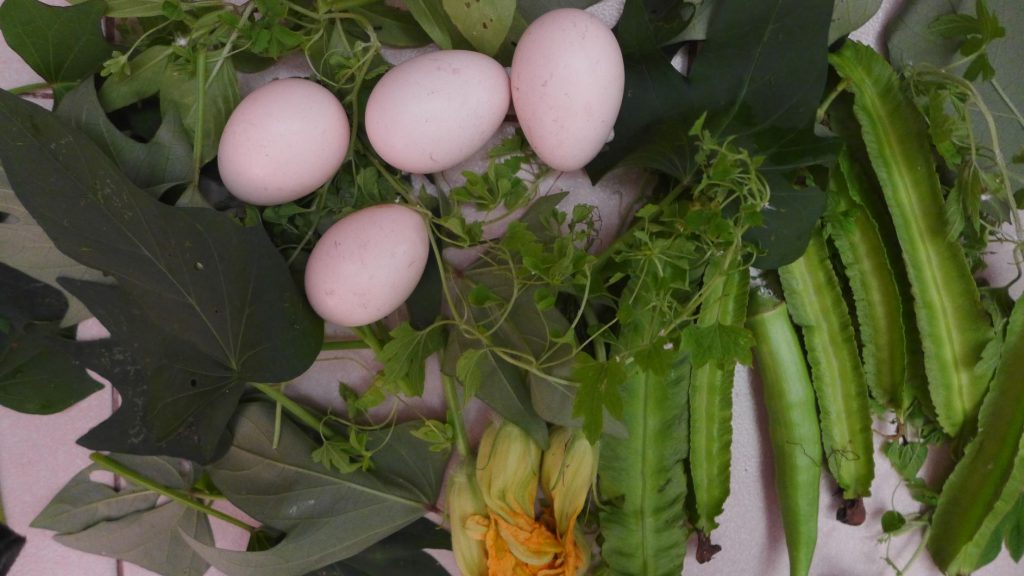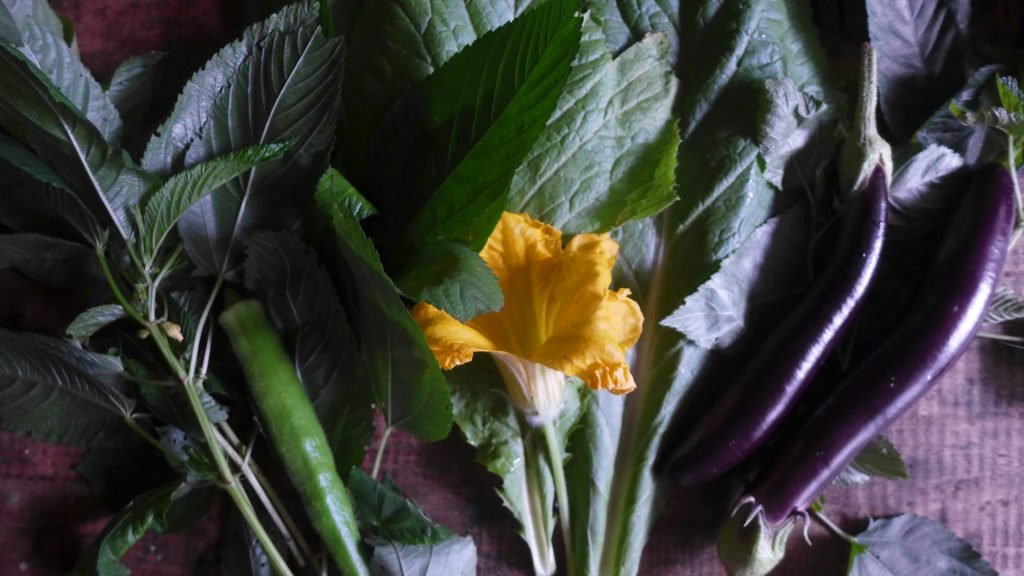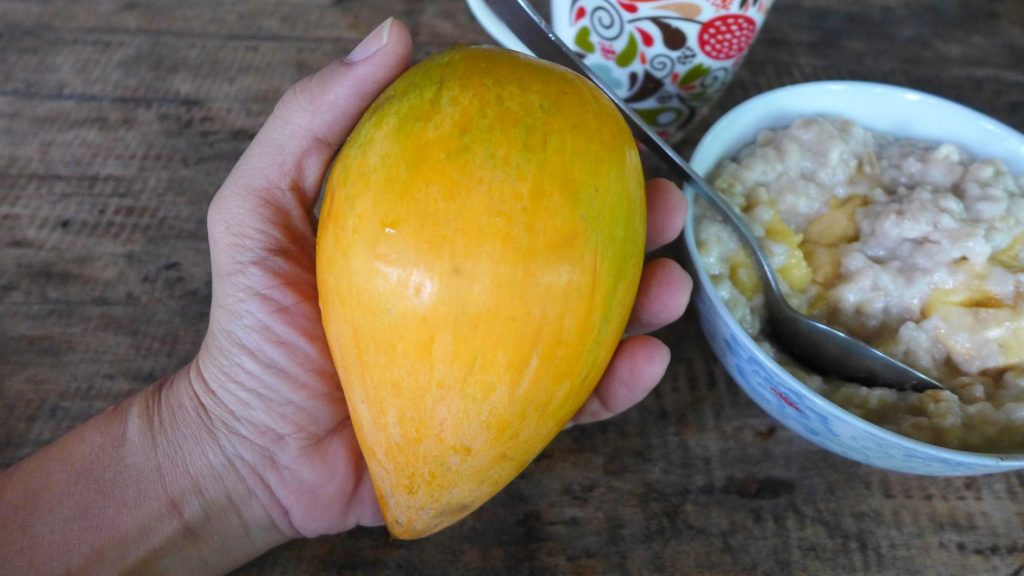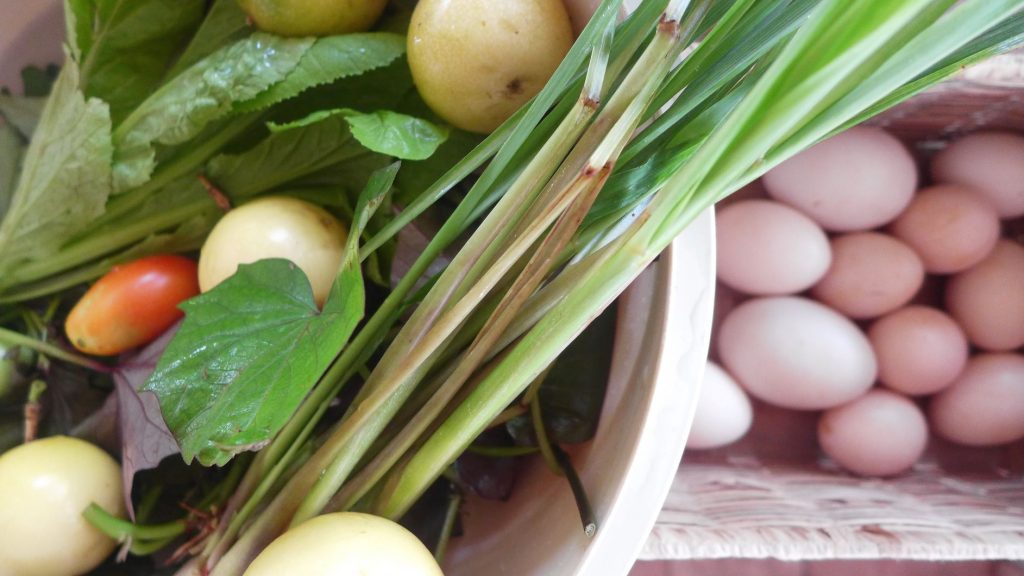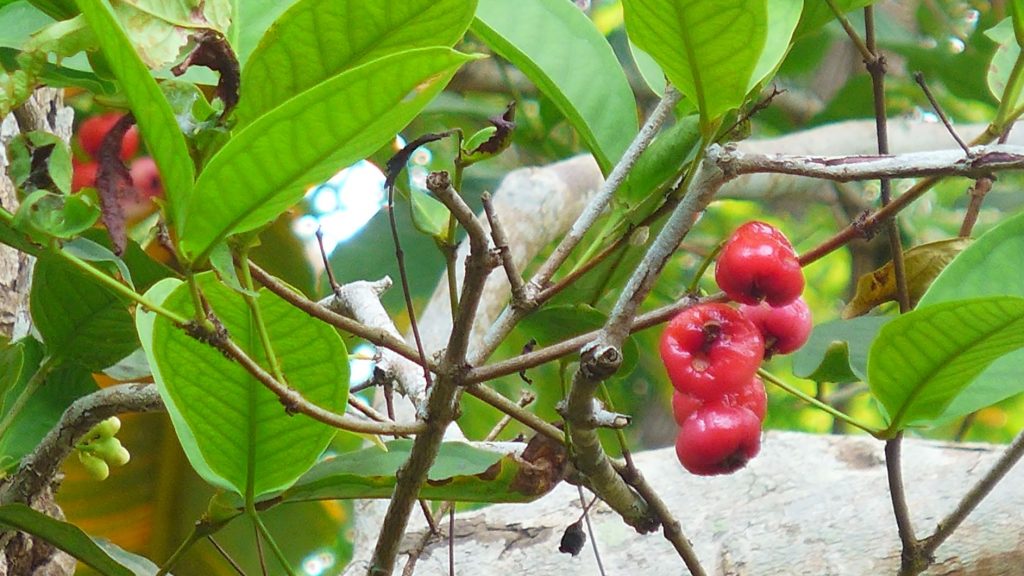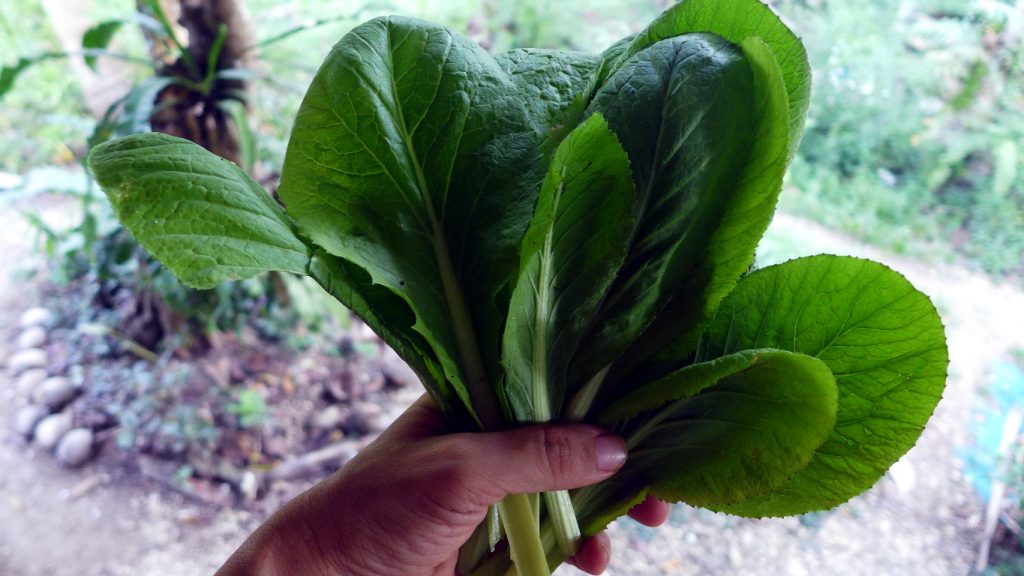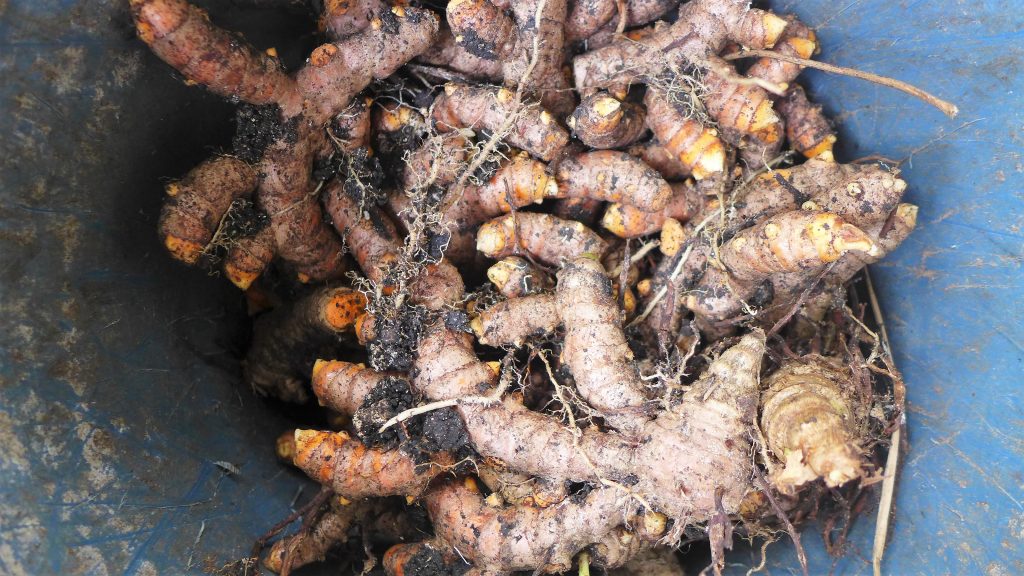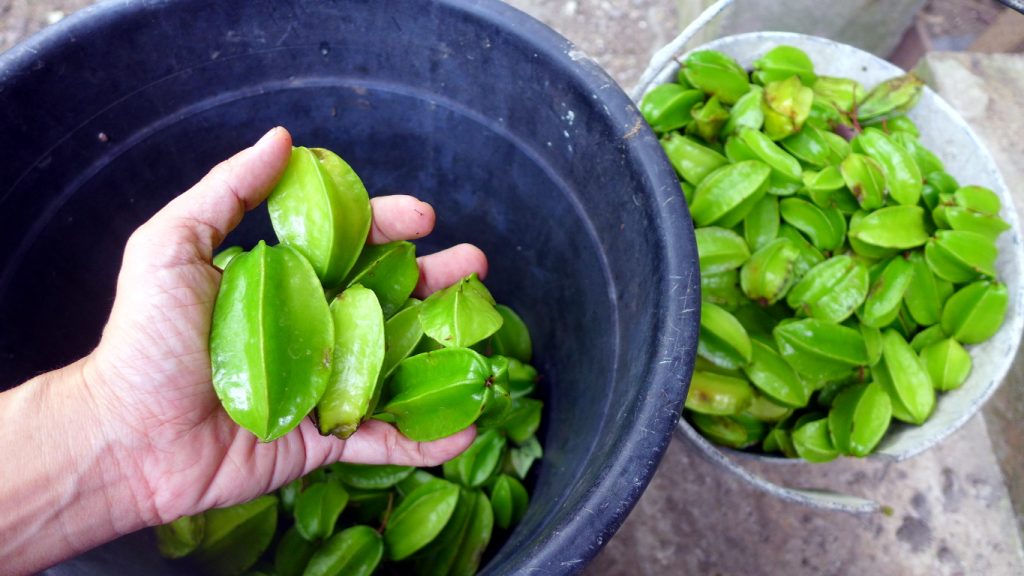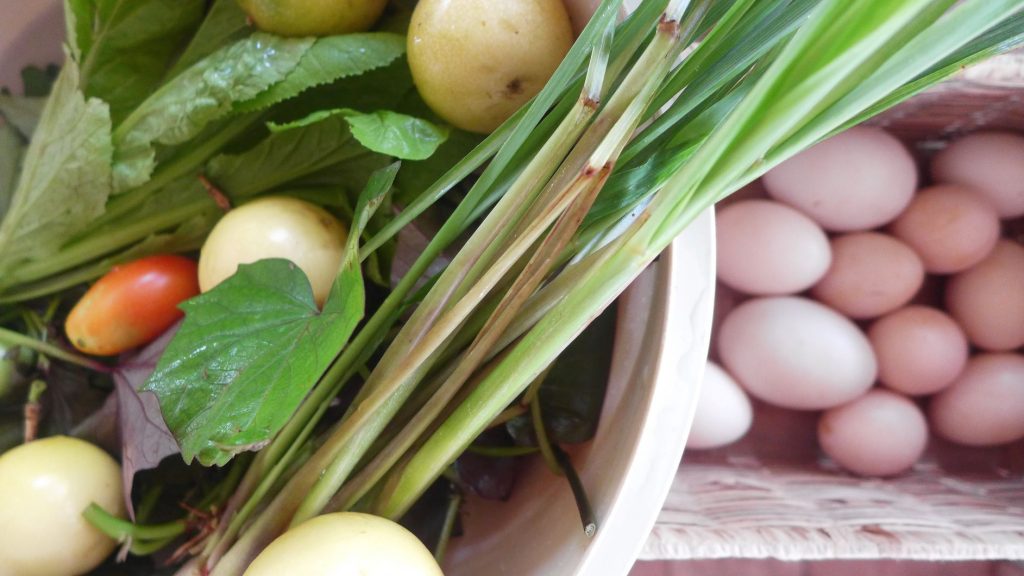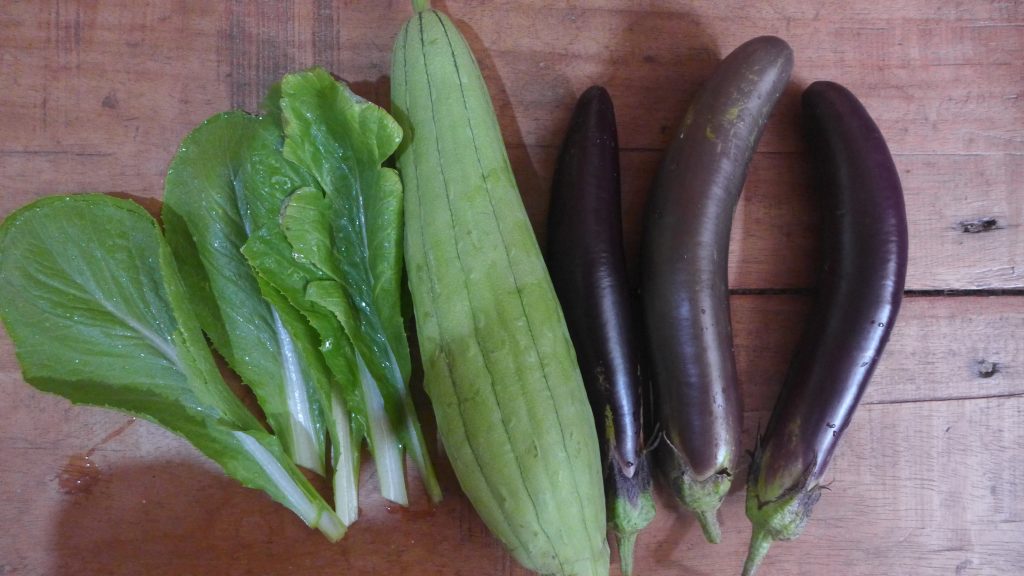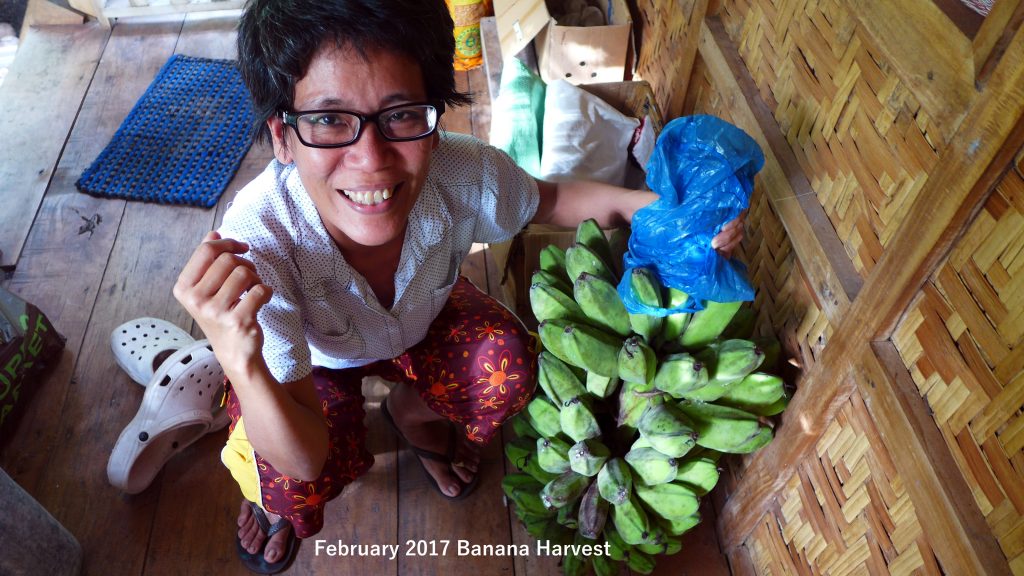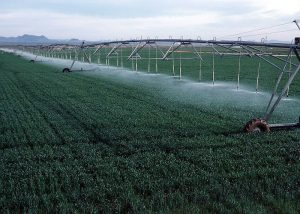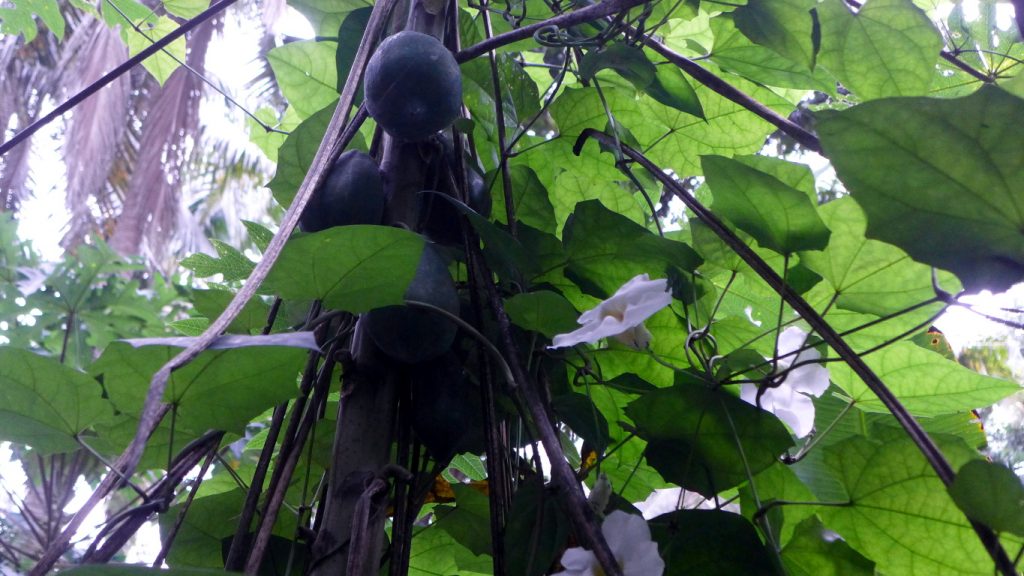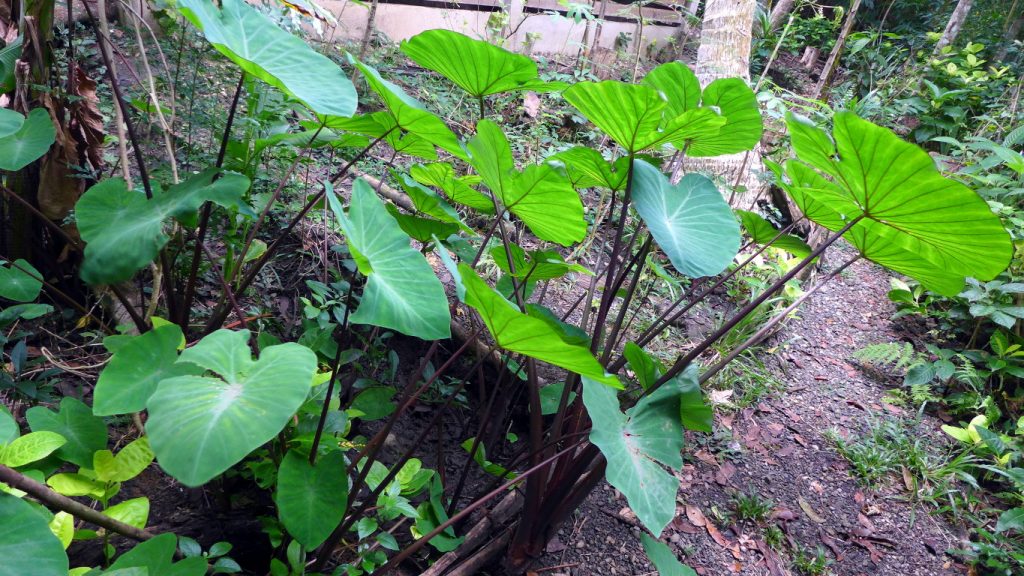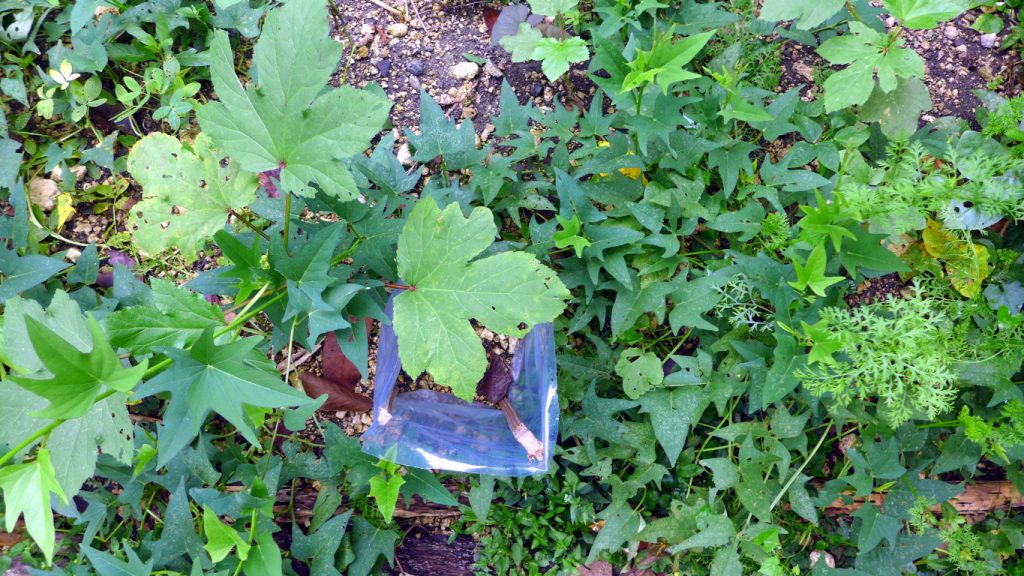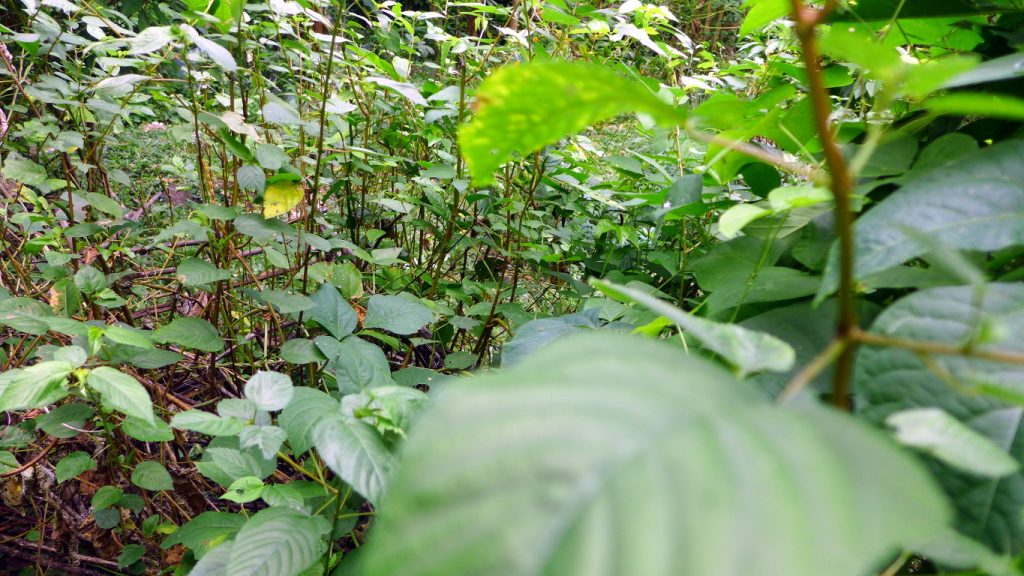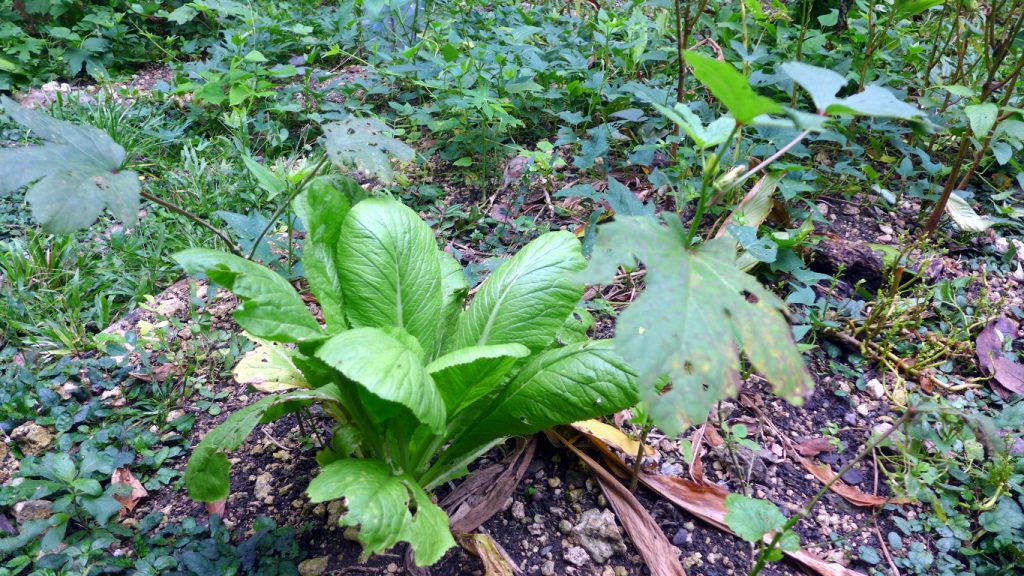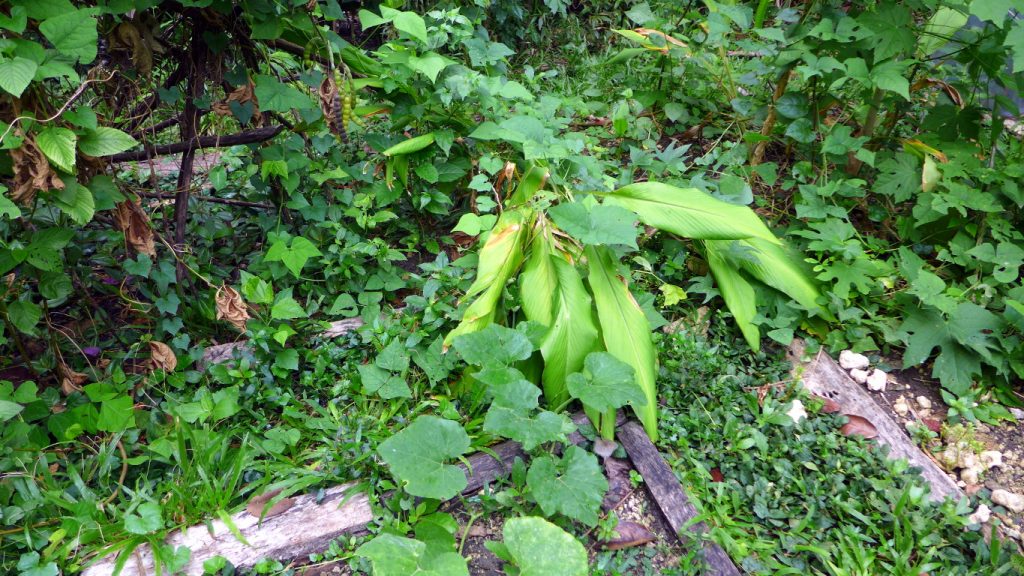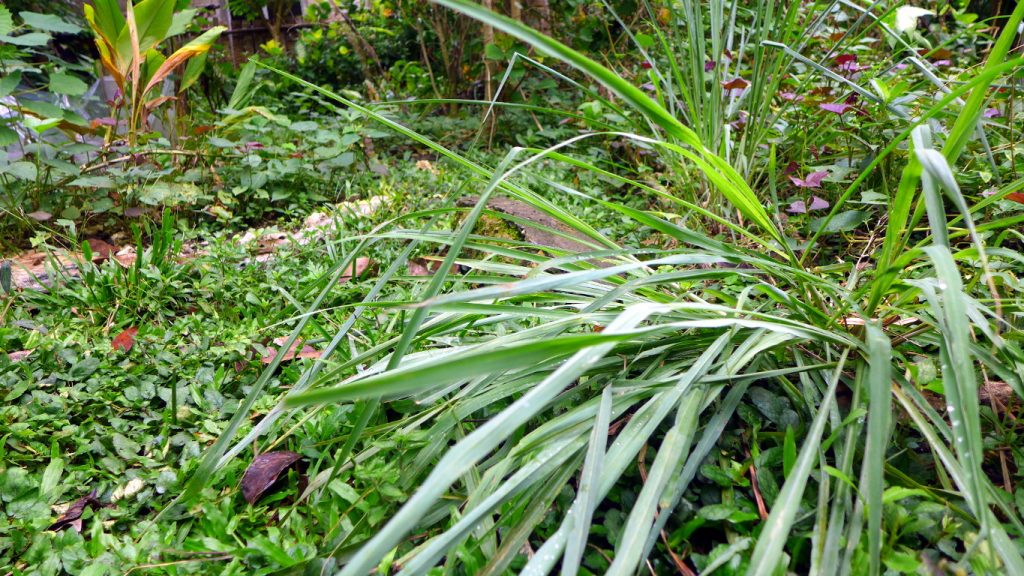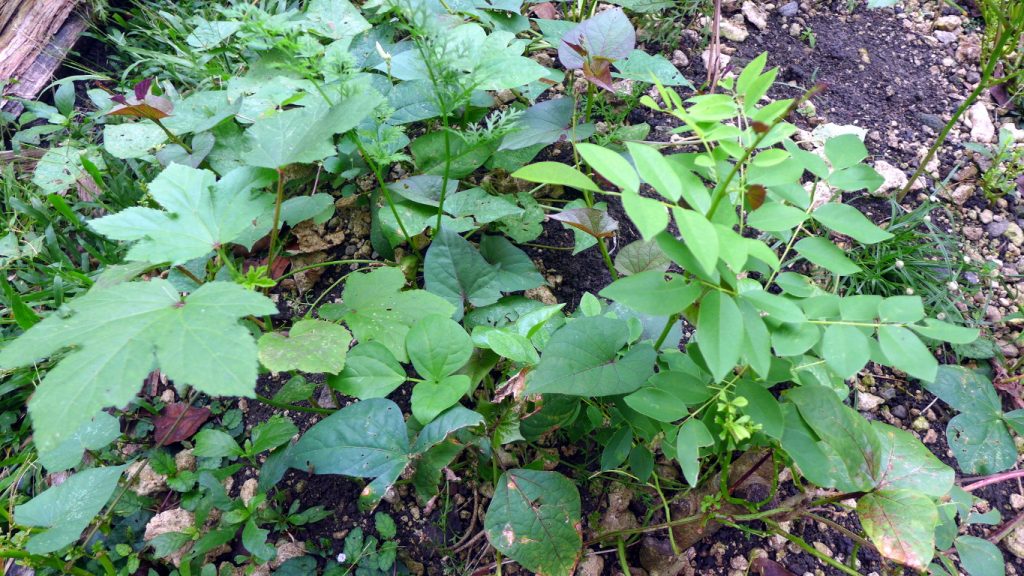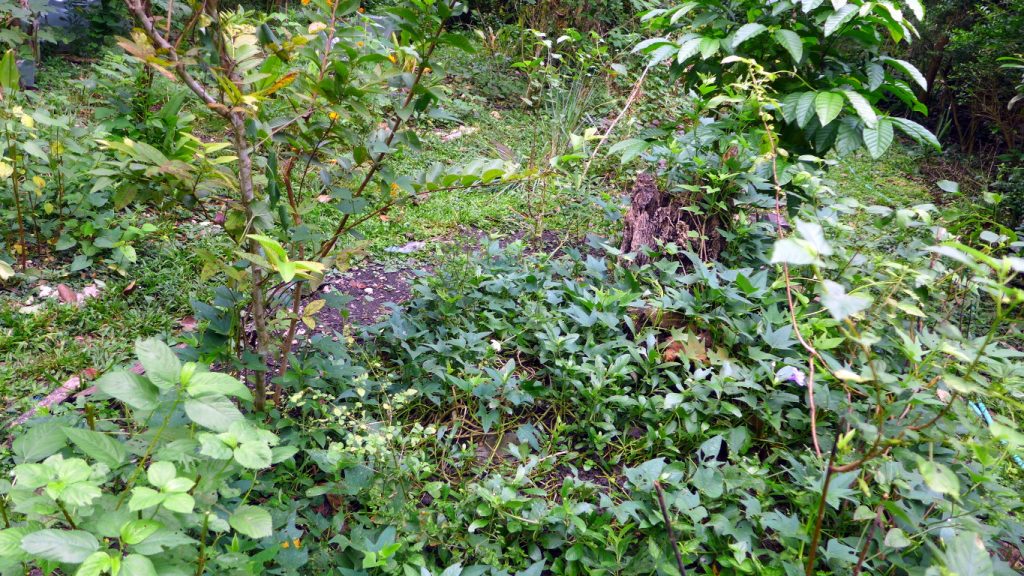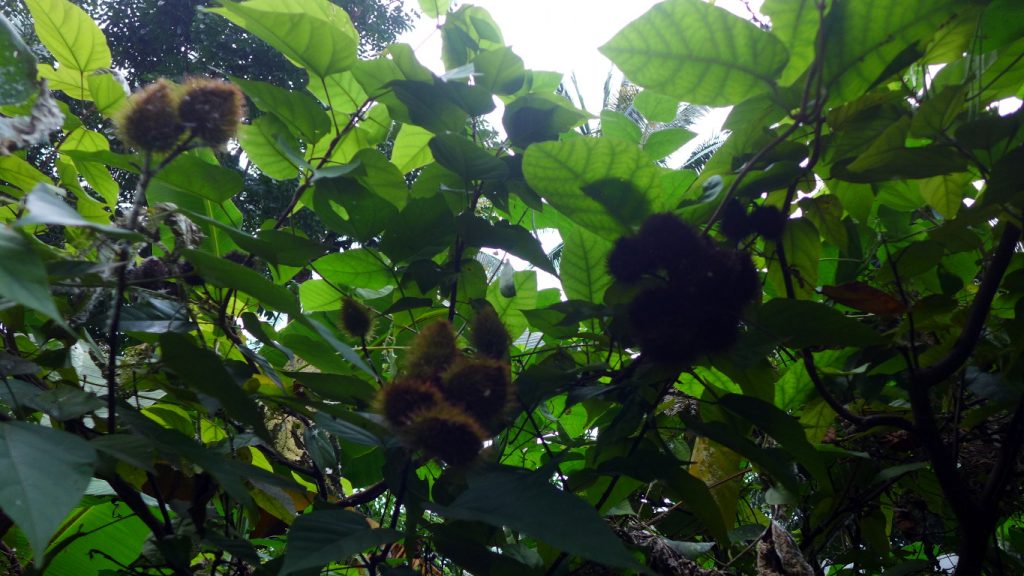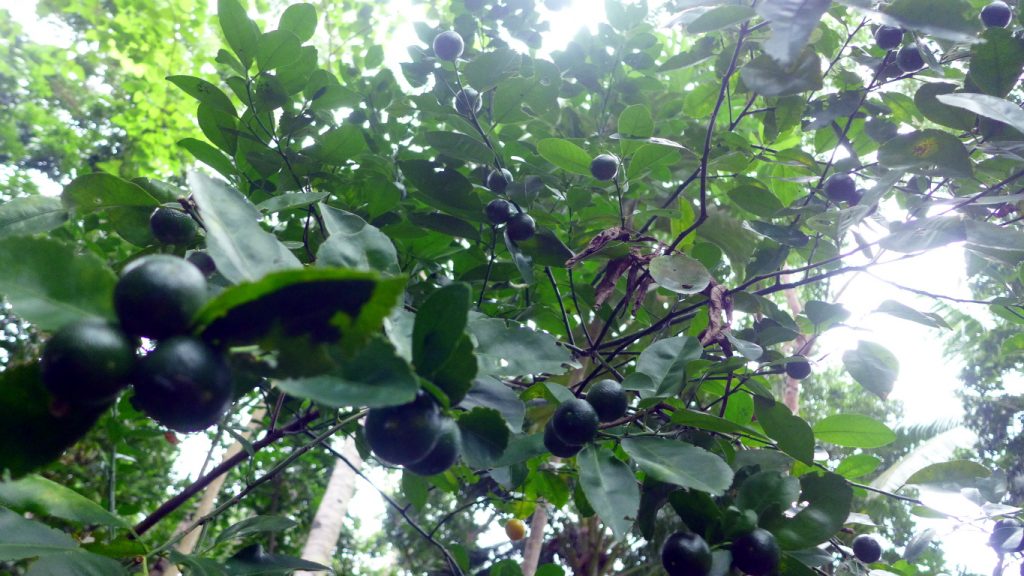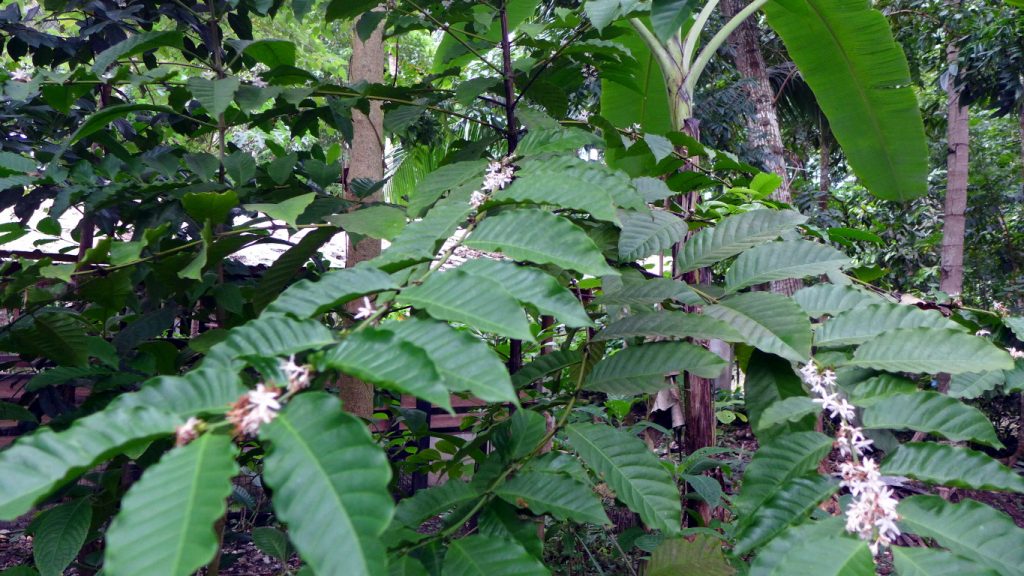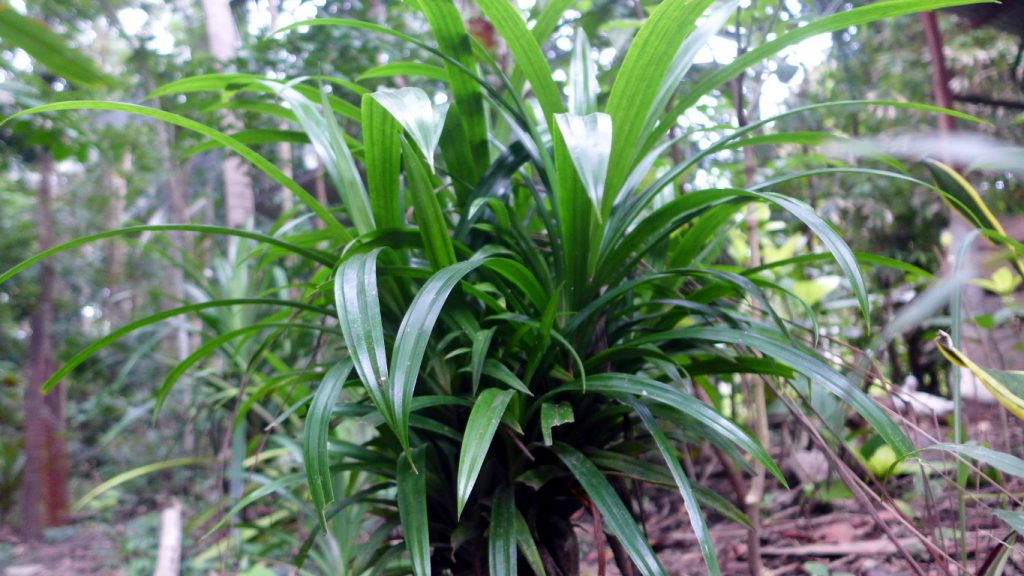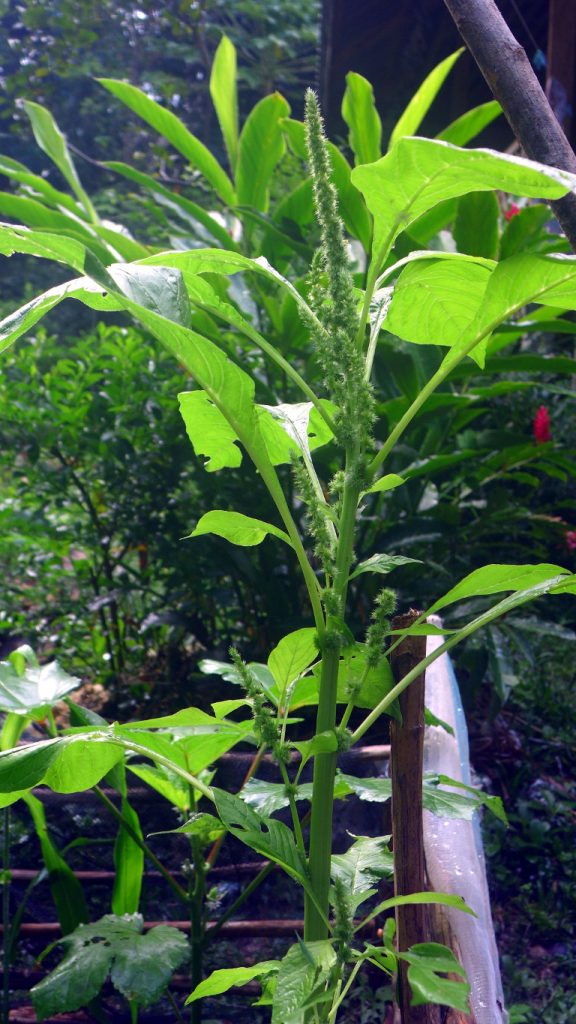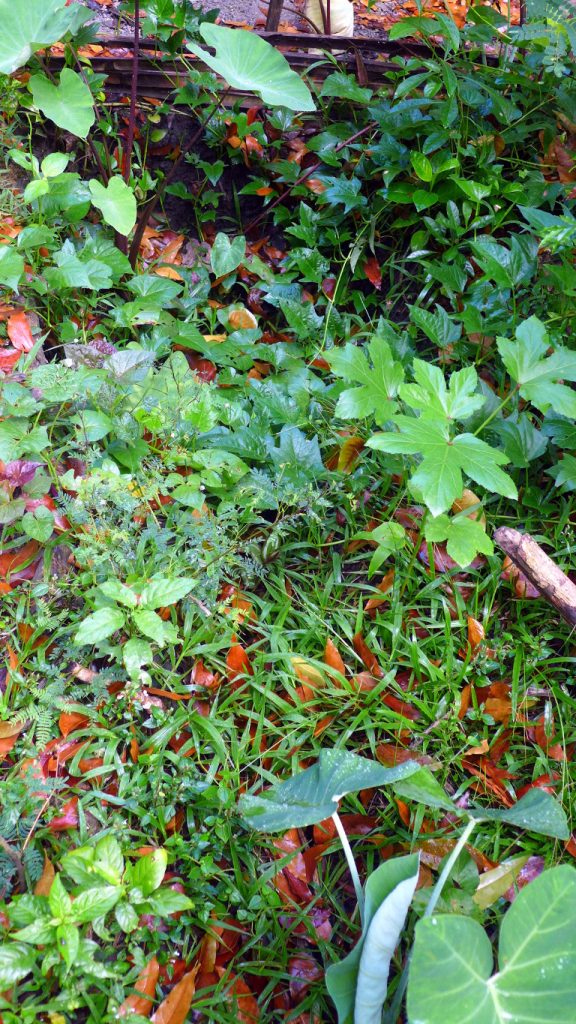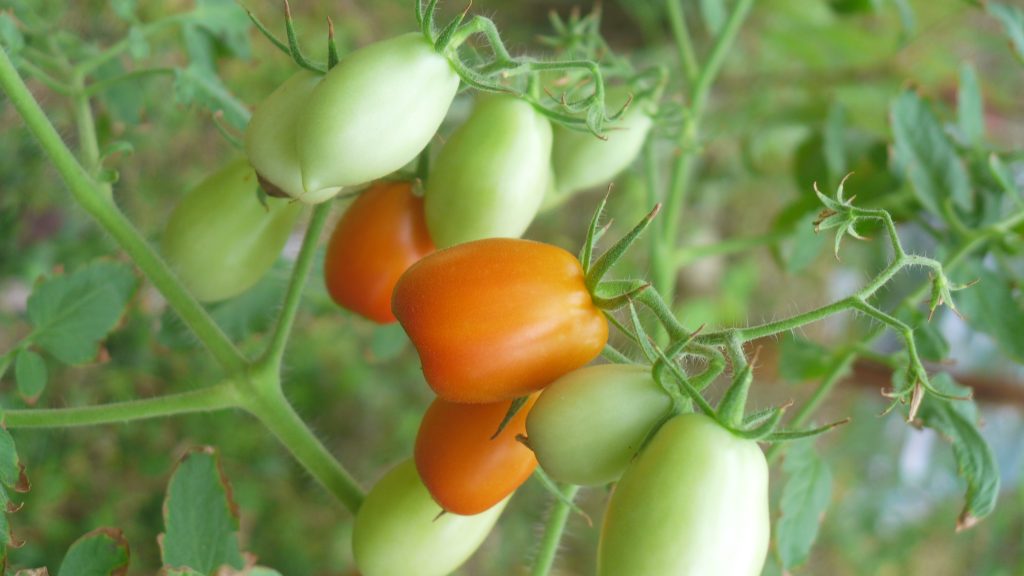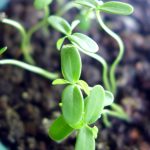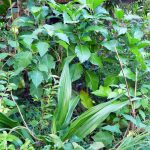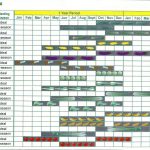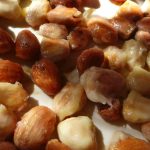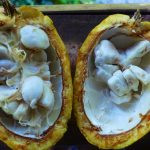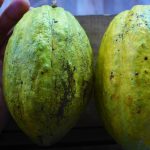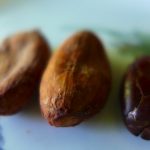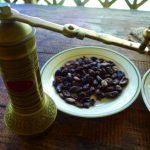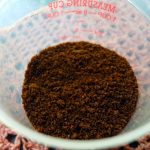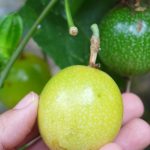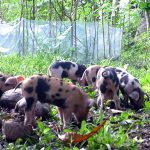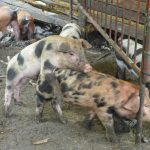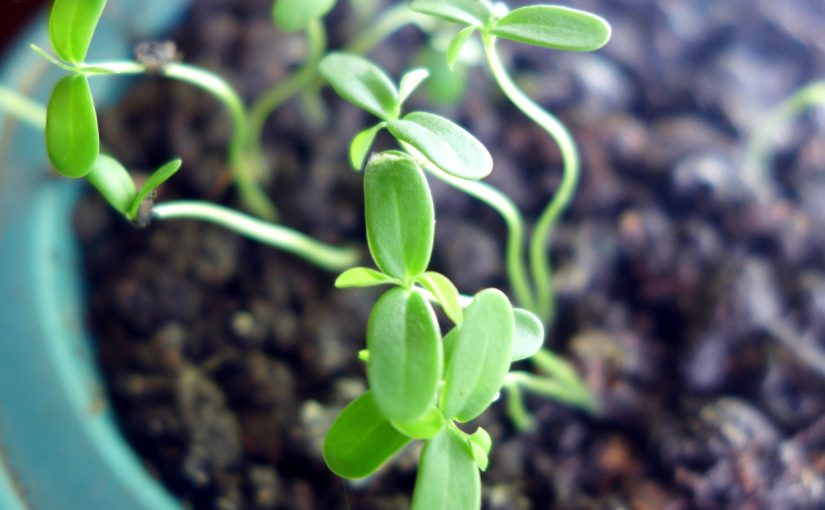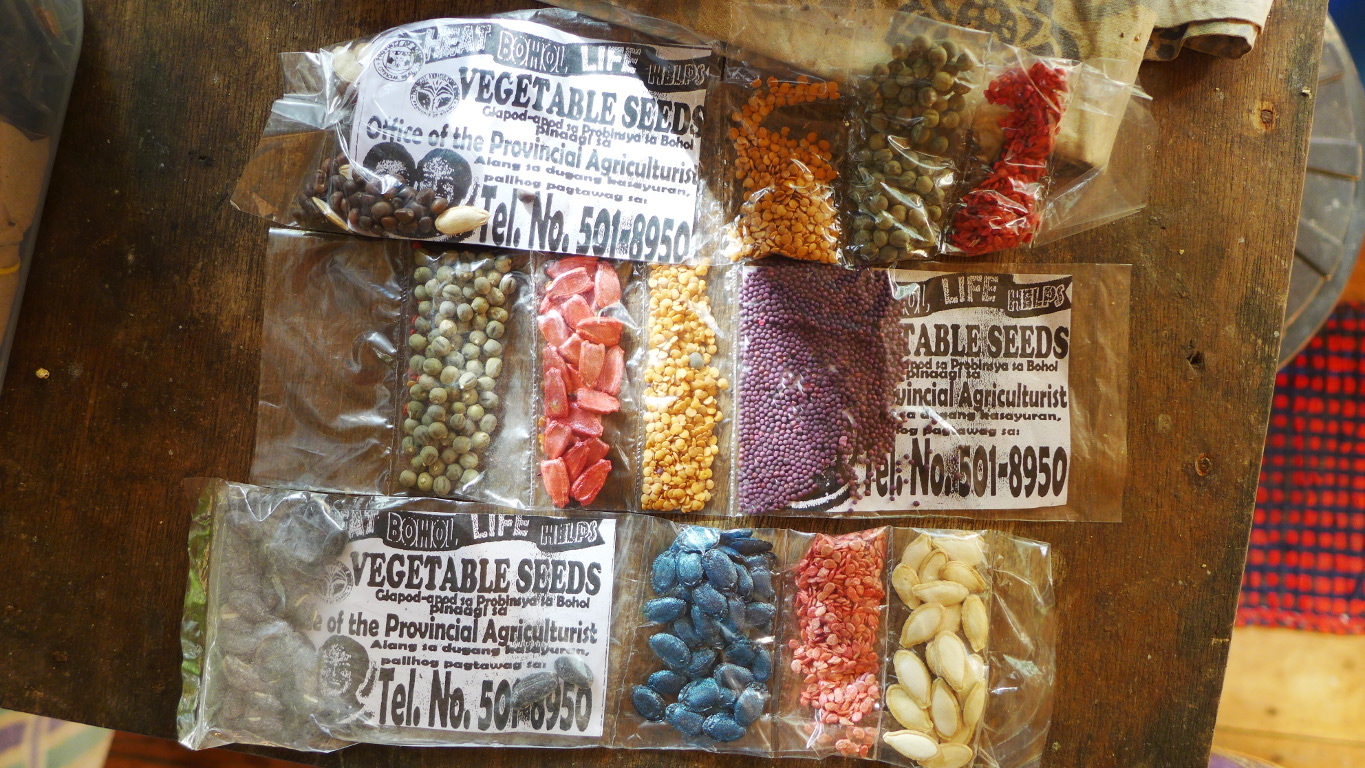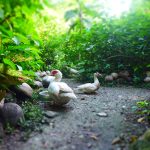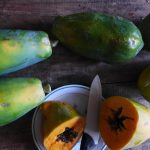Below are photos of some of the produce collected from the garden on a daily basis. Some days are better than others, depending on the season. There is a lot of variety in our small harvests and our meals are designed around such variety.
We don’t produce crops in the way prescribed by conventional agriculture. You won’t see rows of the same crops grown together in tilled plant beds. Low in cost, labour and maintenance, high in diversity, this has been a way of securing food in tropical areas since prehistoric times. But with the advent of modern agriculture for commercial food production, these edible forest gardens and the old practices and traditions that created them, were lost. Sadly, even in non-commercial settings, food forest gardening is little known, as majority of the population became educated in the ways of conventional agriculture.
Below are three photos depicting most agricultural practices.
Our Food Forest Journey
We are creating our food forest garden on land that has been developed as a coconut plantation in the midst of government-led campaigns for copra production. Synthetic fertilizers given out by government were regularly used. Coconut trees were planted very closely together, many less than a meter apart, such that an area of less than 2,000 square meters had 60 coconut trees. The land was also planted with exotic and invasive mahogany and gmelina trees in a similar campaign for fast-growing sources of timber. The land also had a history of cattle grazing.
Rocky and sloping and such a history of use spanning over 75 years left us with land that is very difficult to manage. The only way, it seemed, to get anything to grow, was through the forest garden.
Our food forest garden includes livestock. We have native chickens and muscovy ducks that free-range. These fowls are problematic because they destroy seedlings and young plants. But this problem also became the opportunity to use companion planting to protect plants during the vulnerable stages of growth. The goats are put in the garden on a leash when some areas need pruning and trimming. The food forest surrounds pigpens with soil flooring regularly filled with coconut leaves, banana leaves and wood chips collected from here and nearby areas. When the pens are cleaned, bedding material are composted and used to amend the soil.

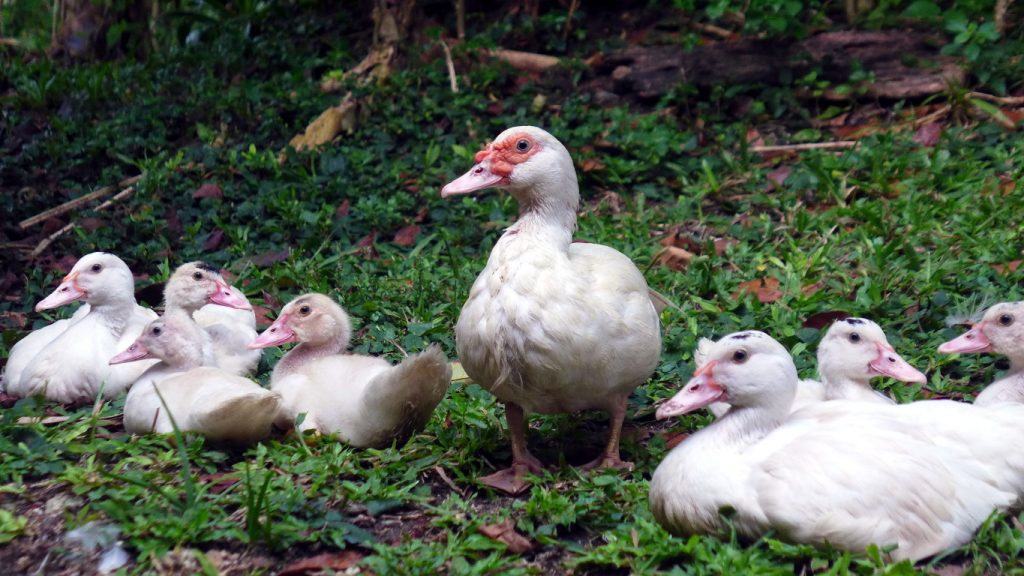
Rain water harvested from the roof of our home and the pigpens is used to water the garden. The gardens close to the house are irrigated with greywater from the kitchen and shower. Kitchen and table scraps are composted in sections of the garden that need improvement. Anything trimmed or cut down from the garden returns to the garden.
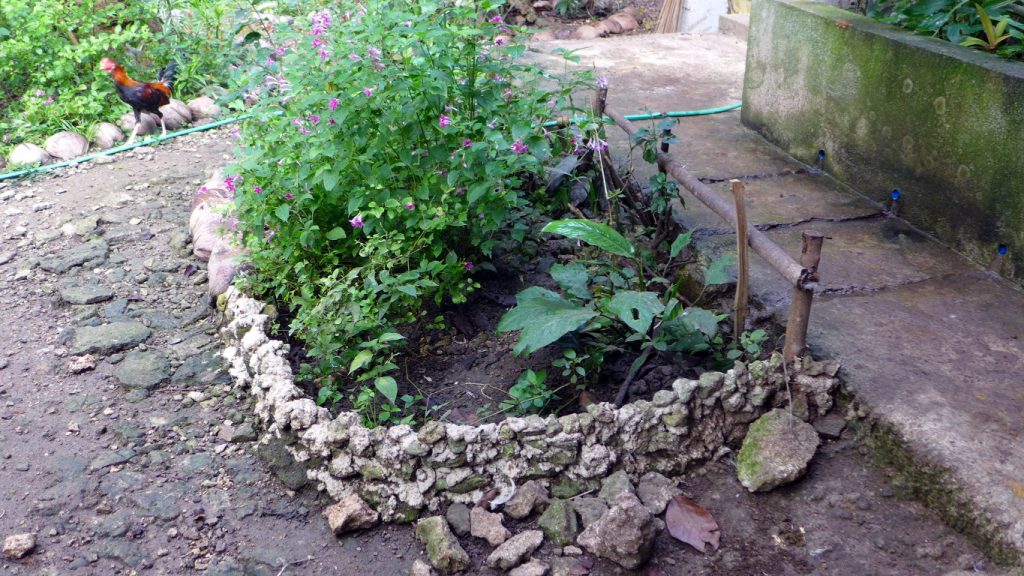
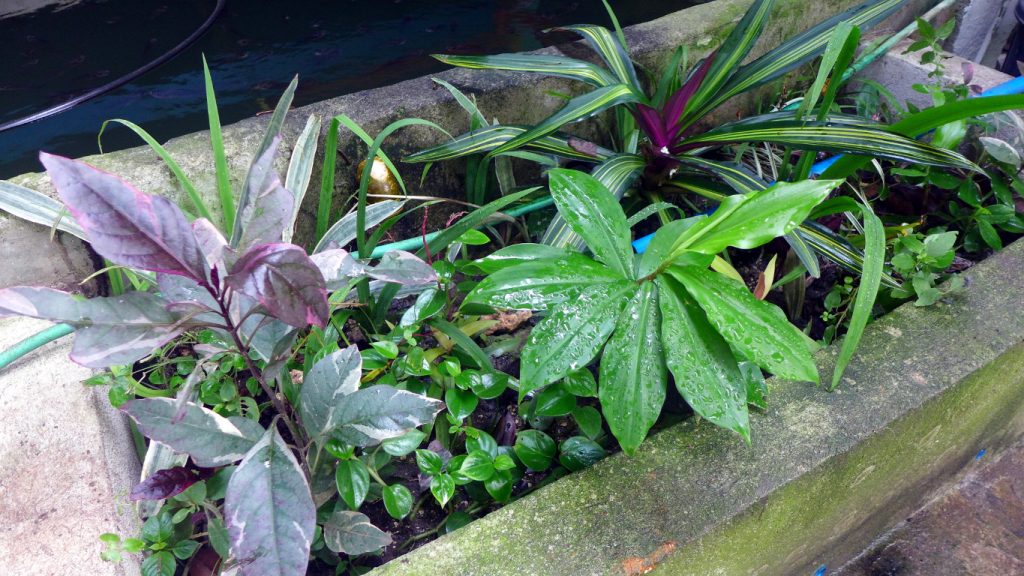
Rain gardens were dug up to control flooding and soil erosion. Rain gardens also became protected areas for such crops as taro which ducks loved to attack. Pioneer native bushes and trees were allowed to grow, attracting native birds, insects, lizards and other species. They also proved to be resilient trellises for climbing crops such as winged beans, yam beans, lima beans, passionfruit and gourds.
This year, 2019, it will be our 9th year working this land. A lot of improvement have taken place and the land is more productive and diverse than it has ever been. Our yield is growing though still far from the yield of land worked in the manner of conventional agriculture. But our inputs are much less invasive, less expensive, less labour-intensive and more environmentally beneficial.
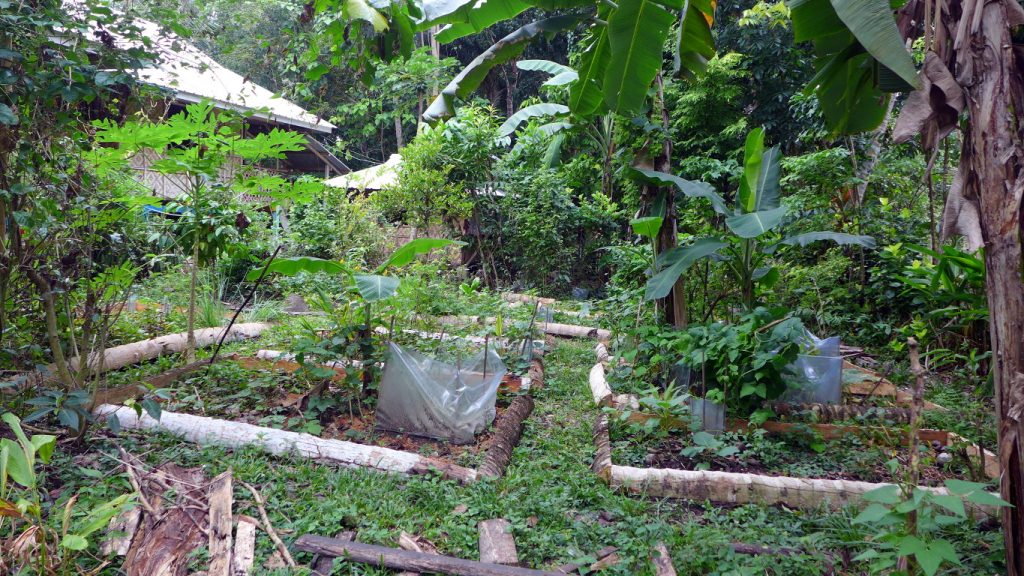
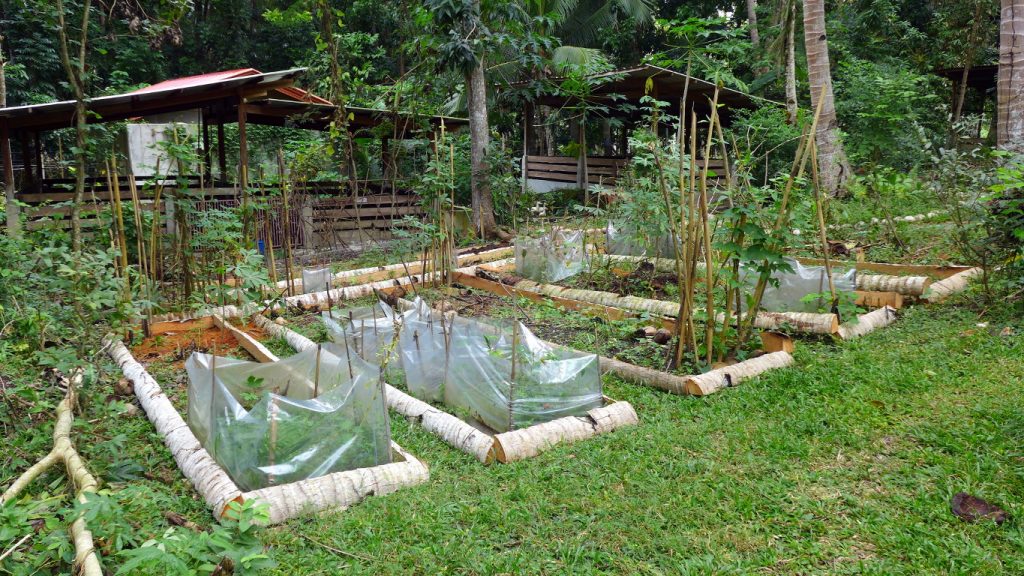
We still have more work to do which develops and evolves slowly over time. Invasive trees will need to be removed and replaced with native varieties. The number of coconut trees will have to be reduced so more diverse crops can grow.
If you would like to grow crops and raise livestock for domestic or commercial production, please consider the food forest gardening method. A good introduction to the food forest garden is by way of Masanobu Fukuoka’s natural farming. However, while food forest systems seem to have its roots in the tropics, a lot of information about food forests on-line are written for temperate and sub-tropical climates. But by understanding the basics, observing your natural environment and working with people who have kept the tradition of forest gardening, you can create your own food forest garden. Good luck!
